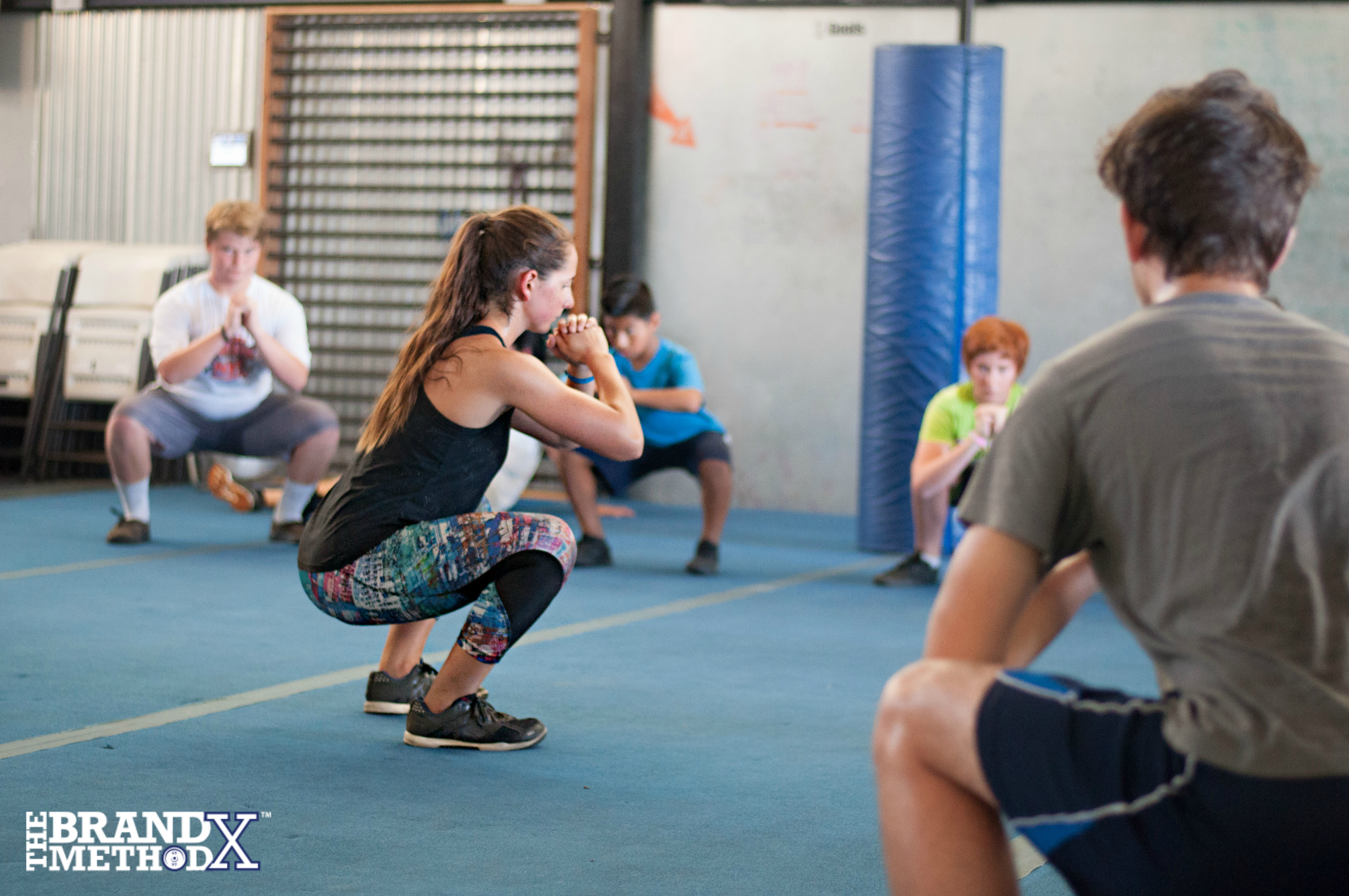How not to teach kids the squat clean pt. 2
As we discussed in the initial edition of this blog, the first mistake coaches commonly make when teaching the clean is skipping steps or stated another way, improperly stacking the building blocks of a complex movement. This leads to kids moving from one poor position to another often missing transitions and eventually causing frustration, plateauing, and sometimes injury.
The second mistake coaches make is not honoring the process of motor learning. In the Brand X ® Professional Youth Coach Certification we discuss the three phases of motor learning:
- The Cognitive phase where movement is slow, inefficient, and inconsistent often under conscious control.
- The Associative phase, where movement is fluid, reliable, efficient and some parts controlled automatically.
- The Autonomous phase where movement is accurate, consistent, and efficient and is generally controlled automatically.
Moving from the Cognitive phase to the Autonomous phase takes time. Think teaching your child to walk or throw a ball amount of time – NOT a couple of half hour classes time. Each stage has specific goals and opportunities for our kids to learn and for us as coaches to teach.
Today, let’s focus on the first phase, the cognitive phase. The cognitive phase is the phase in which we can do the most coaching. By definition it is the phase the child is thinking through the entire process of the clean. Imagine how important this phase is! In many cases the child you are teaching has likely never even seen a clean!
This is the phase we can use all the communication skills we learned in the PYCC. It is not uncommon in a Brand X Excel (12-18) class to show a video of someone performing the movement we will be teaching and explain why we are learning the movement. We then circle the kids up around a good mover who performs the movement while the coach discusses specific checkpoints. Next, the circle performs the movement with the teen in the middle. Sometimes individual kids are brought out to teach parts of the movement. We are hitting the visual, verbal, kinesthetic, logical, and social learning systems that we discussed in the Professional Youth Coach Certification.
Motor learning is a natural progression best guided by great coaching. The child needs to understand the what, why and how before they are ever able to perform the clean. This is where the coach is integral to the process- when we are using the building blocks we discussed in the last blog post the child is learning to link the movements that they have learned and mastered together in a seamless, efficient and automatic effort. Take a breath and remember this requires time. Honor the process.
Want to learn more? Get started with The Brand X Essentials

